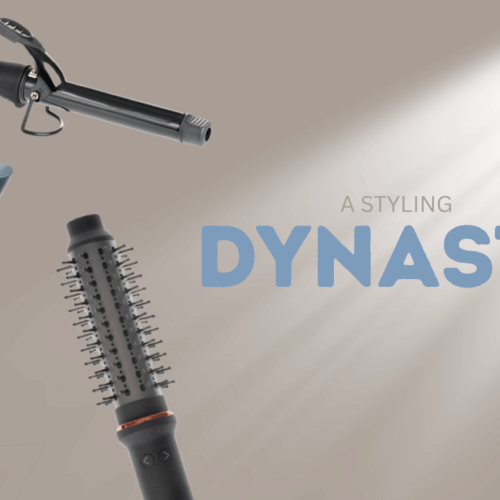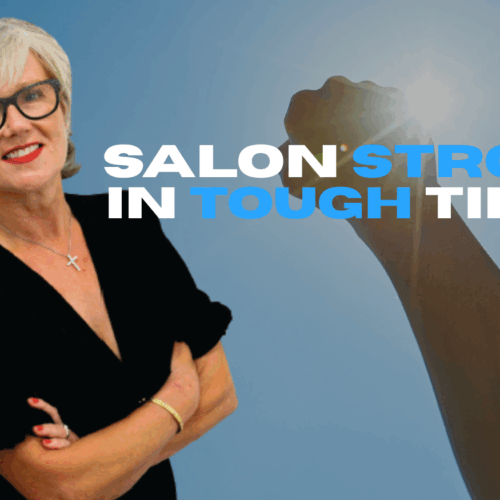Visionary hairdresser and salon owner, Robert Masciave says that knowing yourself is the first step towards success.
‘Who am I?’ is probably the most important question anyone looking for success needs to ask themselves. It is only by understanding ourselves, our strengths and weaknesses and the way we process information and experiences that we can grow and develop as people. Once we understand our own minds and how they work, we can then develop a better understanding of how others can excel in their work and lives.
As a business owner and educator, I use the concept of whole brain thinking to help me understand myself, to grow as a person and as a business owner, and develop a better understanding of those around me – my clients and my team.
Whole brain thinking provides a basis for improved understanding and insight. It acknowledges that different tasks require different mental processes, and different people prefer different kinds of thinking.
The basis of whole brain thinking is that our brains are split into four main quadrants and that most people have one or maybe two dominant quadrants that are their default.
On the left of the brain we have the analytical and the procedural quadrants. People who are led by the analytical quadrant like to analyse and understand everything from the outset, those led by the procedural quadrant want discipline and focus in everything they do.
On the right-hand side of the brain we have the Innovative/imaginative quadrant and the relational quadrant. Those led by the innovative quadrant have a great sense of vision, they are excellent ideas people who want to move forwards; relational people are good at communicating with others, they are led by emotion and how they feel.
Most people will navigate between more than one quadrant, but they will have a default quadrant that they return to.
My default quadrant is the Innovative/imaginative quadrant, although I have been told that I navigate comfortably between all four, which is quite common among business owners and CEOs.
When people are able to do things using the default quadrant of their brain, the task will seem much easier and more enjoyable. When they are forced to use one of the other quadrants it will seem like much more of an effort.
By using whole brain thinking to understand yourself better and make yourself more aware of your strengths and weaknesses you will begin to learn more effectively and take more from every experience.
You will find it much easier to motivate yourself and also to communicate with and motivate others, including your team and your clients.
Using whole brain thinking, as well as developing yourself more effectively, you will begin to recognise the quadrant that other people use as their default, and be able to communicate more effectively with them and build more positive relationships. For example, if you have a client who is very procedural, make sure that during the consultation you give them a detailed account of how you are going to create the cut or style.
However, if you know your client is led by the innovative/imaginative quadrant, they won’t want all this detail, it will bore them. They will just want to know what the finished cut will look like.
You can ask key questions during the initial consultation which will reveal a client’s default quadrant.
For example, if you ask a client “How do you feel about your hair?” and they respond, “It makes me feel old”, they are most likely led by the relational quadrant; if their response is, “It takes me too long to do in the morning when I’m rushing to get to work,” then they are a procedural person.
As a hairdresser, it’s important that you don’t try and drag a client into your quadrant. By this I mean, you need to learn to communicate with people in a way that will appeal to their default or dominant quadrant, rather than using language that appeals to you.
The whole brain thinking model is also a great way to create an efficient team and communicate with individuals in a way that will motivate them to work more effectively for your business, capitalising on their strengths. Many successful businesses in a vast array of sectors use whole brain thinking as a model for building an effective team.
In an ideal world, a salon would have a team that covered all four quadrants, but in reality, it is more about education and helping people work more effectively by knowing how their minds work and how those of their team mates’ work.
I have spoken to my team about whole brain thinking and we have established the quadrants that are dominant for each team member.
This makes it easier for the team members to communicate together and, perhaps, be more understanding if a particular team member doesn’t excel in certain situations. With this understanding, individuals will develop more quickly and effectively and enjoy the process of learning far more.
Using whole brain thinking as a tool has helped me develop as a person, as a businessman and as an educator. It has made me a better communicator and the empathy that comes with an understanding of whole brain thinking has helped me develop and nurture my team and create a loyal client base.





